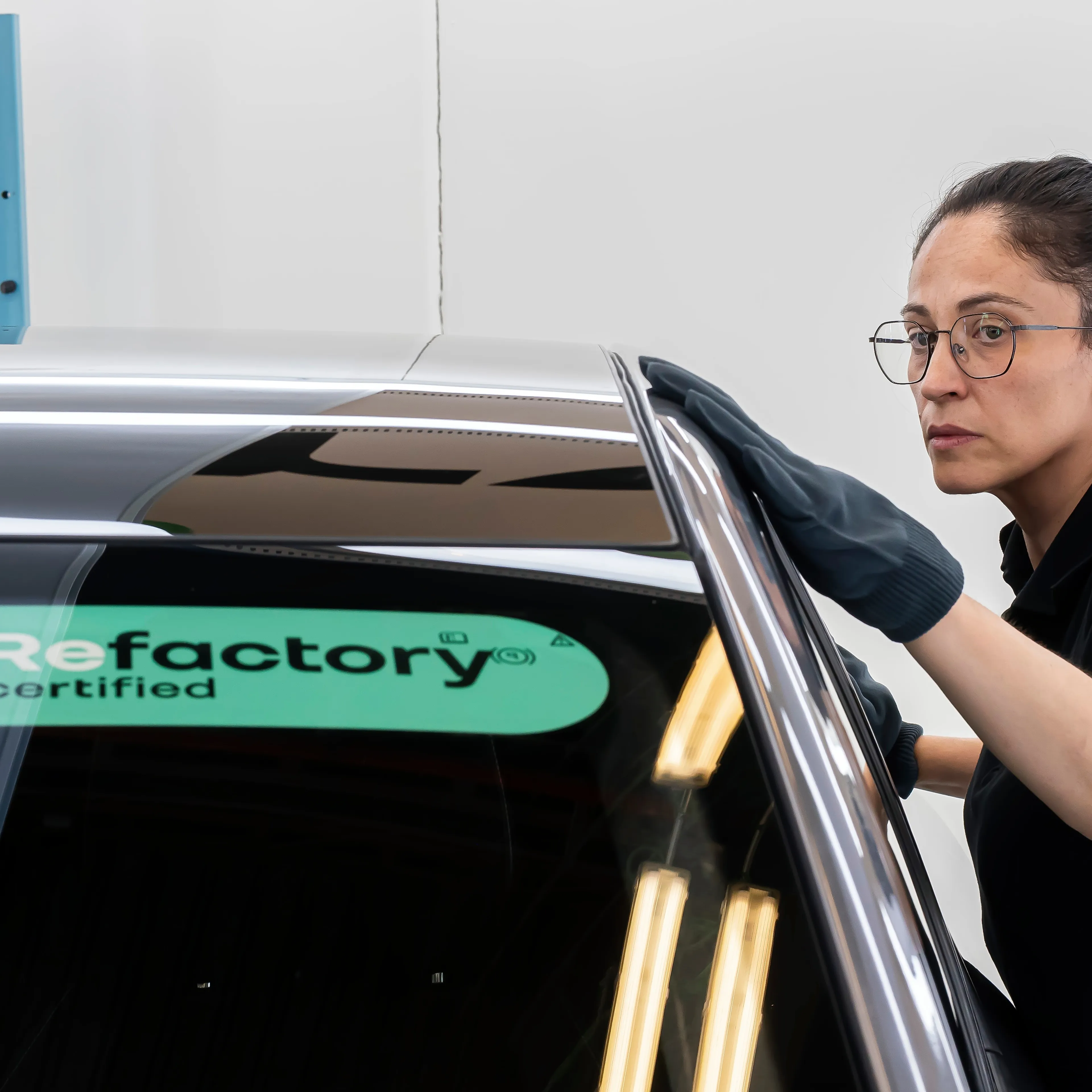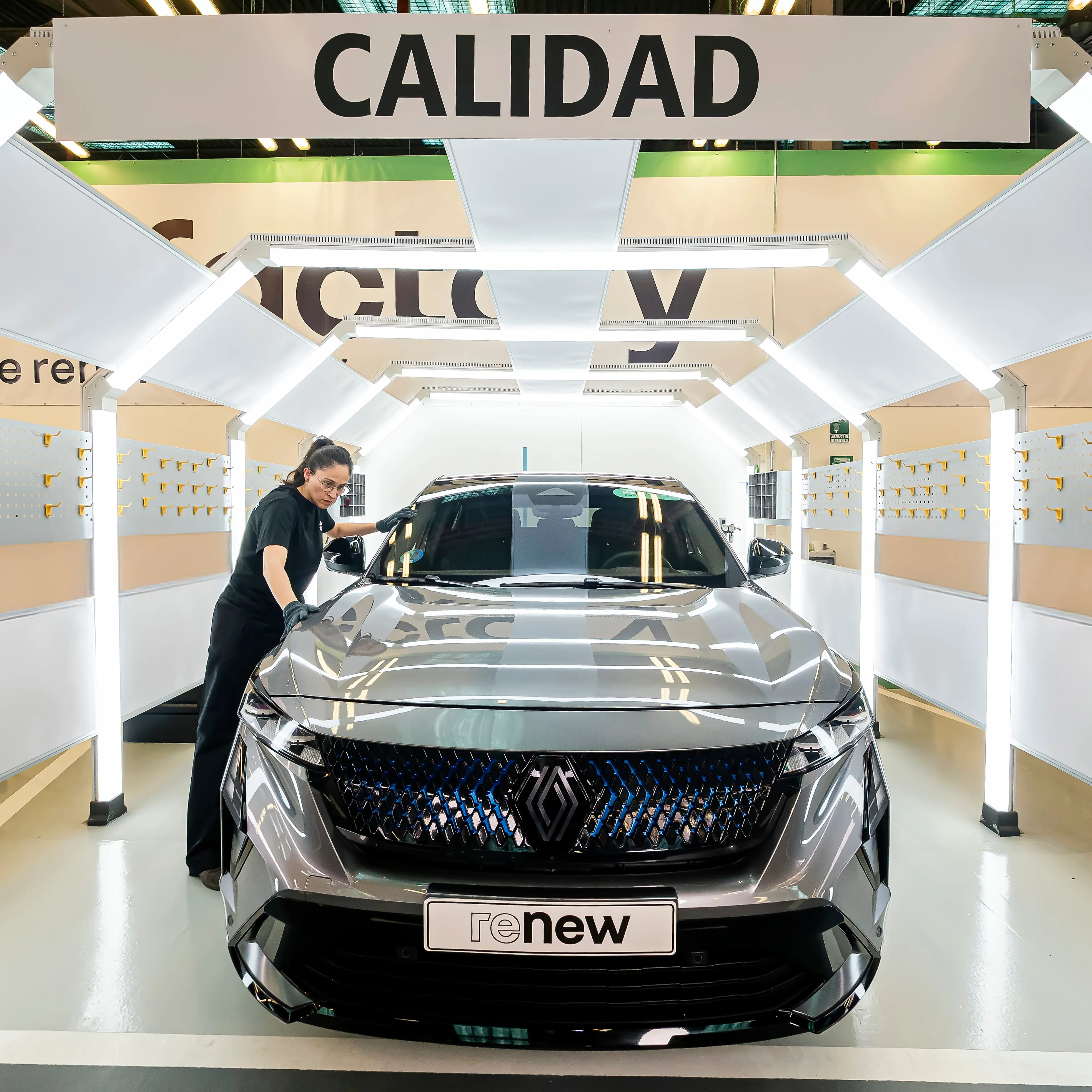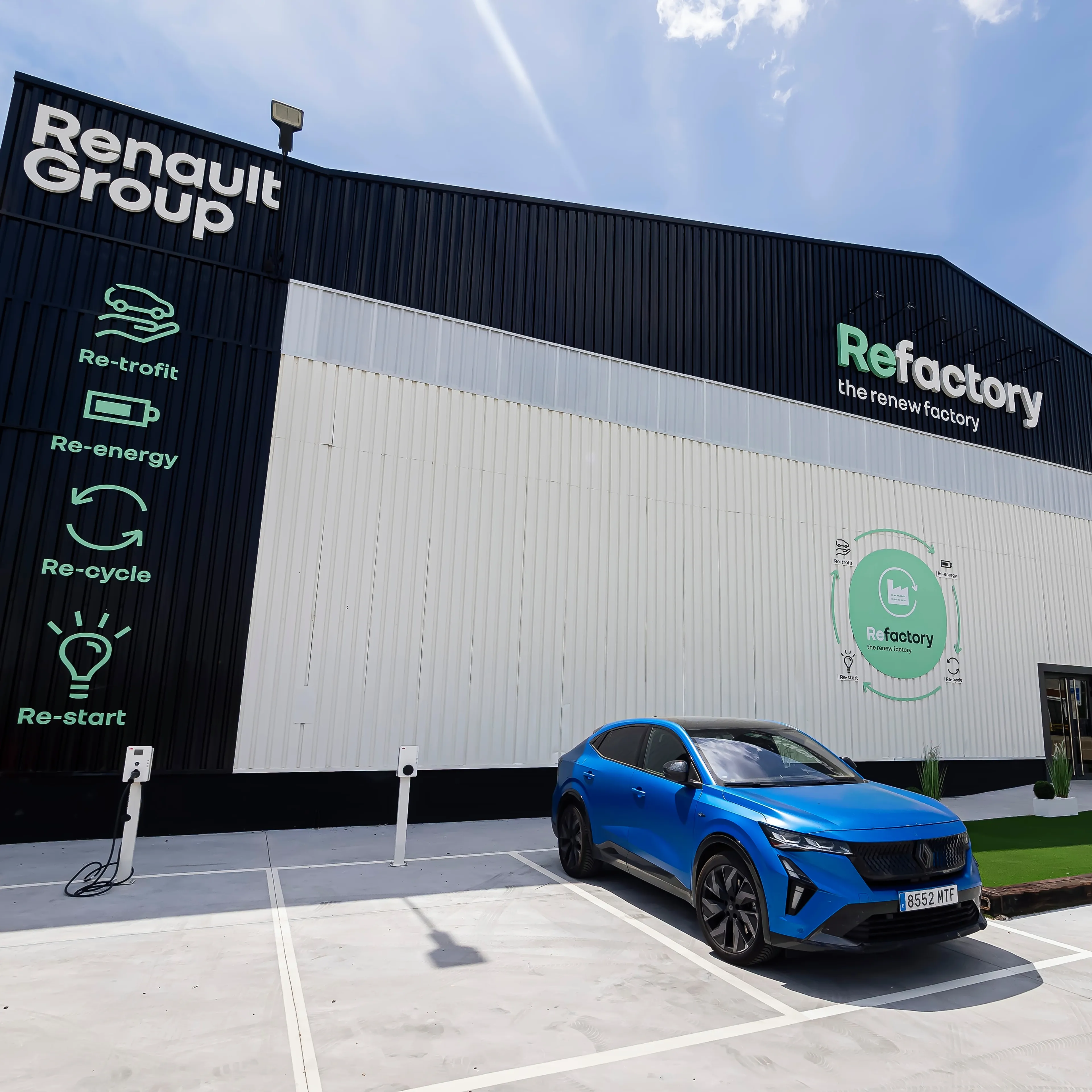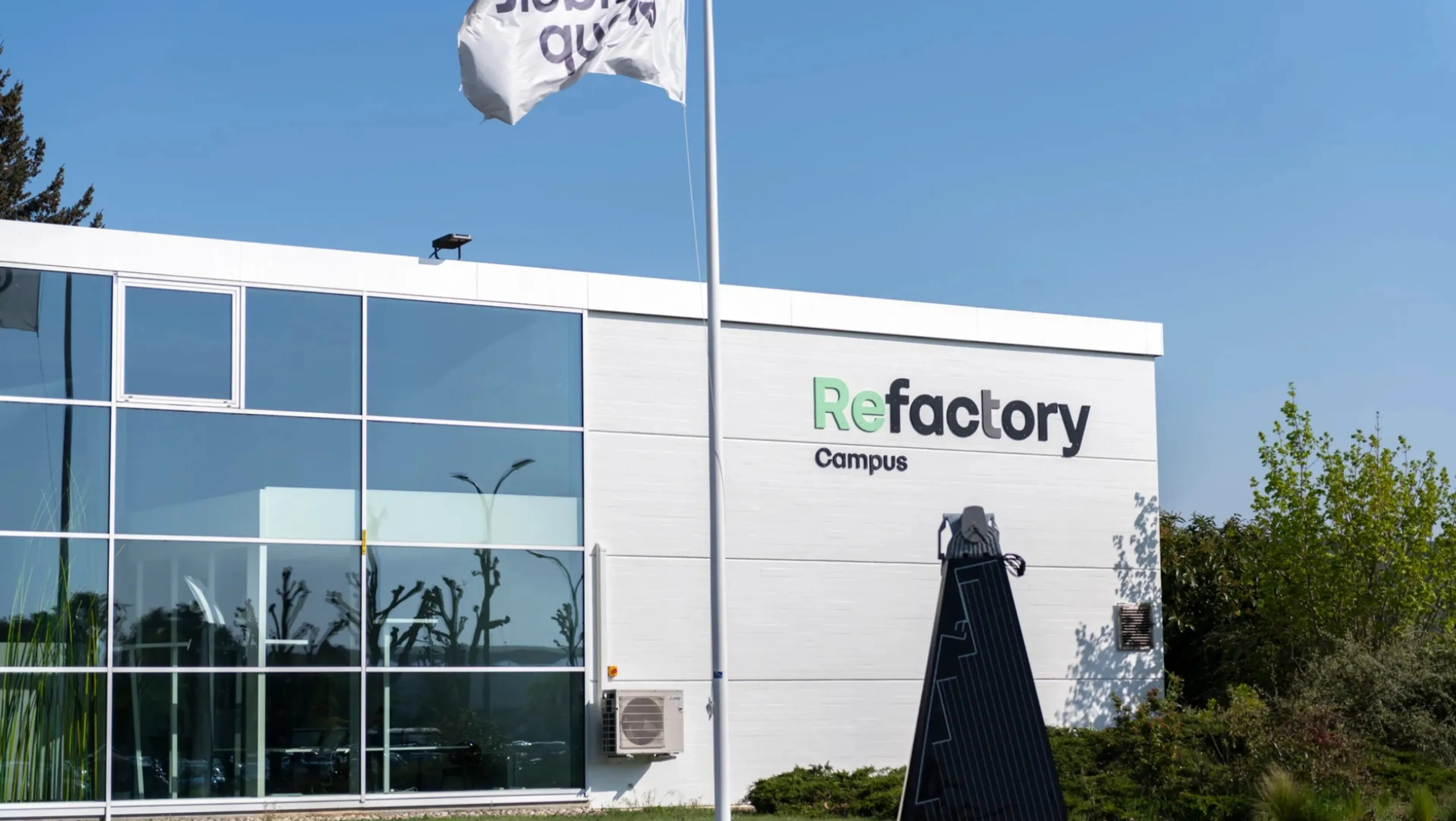The refurbished vehicle at the heart of the European sustainable development week
Published on
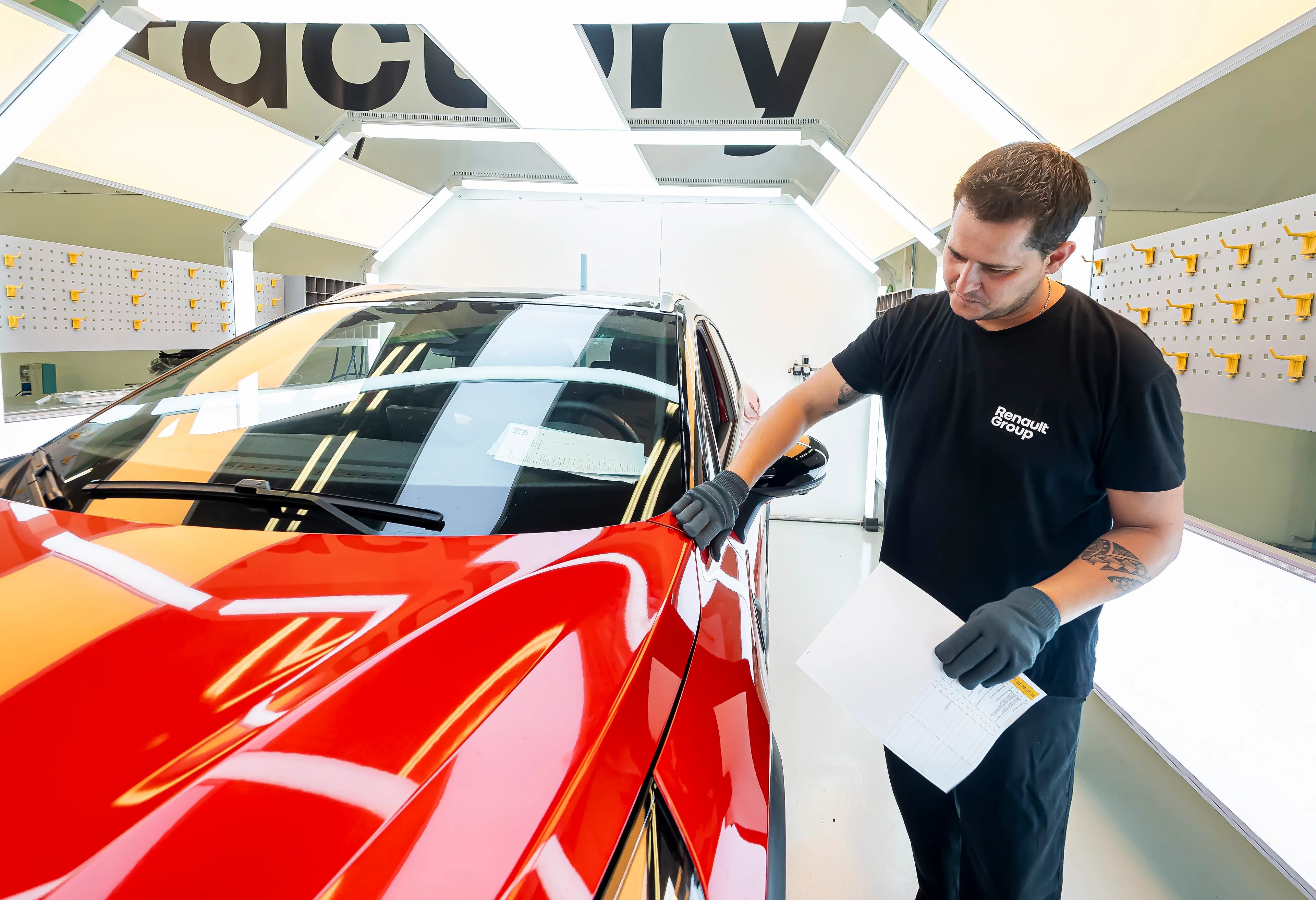
On the occasion of the European sustainable development week, from September 18 to October 8, 2025, let’s take a closer look at the development of Renault Group’s various used-vehicle refurbishment models. As a cornerstone of our circular economy strategy, this new activity supports the rollout of ‘renew factories’ across Europe, giving a second life to the growing volume of used vehicles, in line with the ‘Refactory certified’ quality excellence standard.
On July 24, 2025, a new refactory was inaugurated in Valladolid. Together with Seville, this new center strengthens our network in Spain for circular economy activities, built on unlocking the vehicle’s value potential at every stage of its life cycle.
Renew Factory: a true automotive refurbishment plant
This opening highlights a rapidly growing business. In 2025, Renault Group is expected to refurbish more than 35,000 used vehicles in its renew factories located in Flins, Bursa, Warsaw, Duisburg, Seville and now Valladolid. The Flins site alone accounts for one-third of this volume.
By 2026, additional renew factories are planned, notably in Poland, Italy, Portugal and the Czech Republic.
Looking ahead to 2032, sales of renew refurbished used vehicles (UVs) to private customers are expected to double, reaching 1.3 million units. In Europe alone, the used vehicle market offers substantial growth opportunities, driven by the anticipated increase in leasing. This trend generates a growing volume of used vehicles to refurbish and resell. That is why our objective is to have a renew factory in every country where we operate by 2032.
New customers attracted by refurbished vehicles
A key element of our strategy, refurbishment activity is also essential to ensuring the success of our used-vehicle business. Moreover, the development of refurbishment processes focused on the circular economy is an effective way of attracting new customers who are sensitive to these issues.
Today, the creation of a used-vehicle refurbishment activity takes different forms. It can be through the establishment of a center based on the Flins refactory model, when the Group has an appropriate industrial base in the country. Or through a “dealer format,” integrated into a retailer’s commercial activity, as was recently the case in Warsaw. Finally, refurbishment can even be developed in partnership with a specialized supplier, such as BLG in Germany.
Refactory certified: a guarantee of quality
In the coming years, we will simultaneously develop our used-vehicle refurbishment activity along these three axes. And to enhance the customer experience (or rather, the ‘customer promise’), Renault is deploying the “Refactory certified” program.
The objective of this program? To strengthen the promise of the renew brand, Renault’s used-vehicle brand, by establishing a program that ensures the rigor of the refurbishment process and supports the circular economy.
Concretely, “Refactory certified” is built on four key pillars:
- Smart repair (repairing rather than replacing),
- Priority use of reused parts when a damaged component needs to be replaced,
- A strict recycling policy,
- Practices that promote energy efficiency.
What is a Refactory?
In 2020, Renault Group created, at its Flins site, the first European circular economy plant dedicated to mobility. The Flins refactory is focused on activities dedicated to vehicle refurbishment, applying the virtuous cycle of “repair / renew / recycle”.
A refactory brings together within its ecosystem a range of industrial activities designed to put vehicles back on the road that are more sustainable, cleaner and capable of living several lives.
As a true driver of growth, and with the support of the entity The Future Is NEUTRAL, the Refactory has become one of the pillars of Renault Group’s commitment to environmental preservation.
The many benefits of the used-vehicle business, embodied by the renew brand
The renew activity offers a wide range of advantages, both for the manufacturer and for the end customer.
Among them: extending the lifespan of vehicles, with the obvious consequence of reducing CO₂ emissions; recycling raw materials and second-life batteries for new uses; speeding up vehicle preparation as well as stock rotation; and even saving showroom space for dealers, thanks to digitalization efforts that reduce the number of vehicles needing to be displayed.
